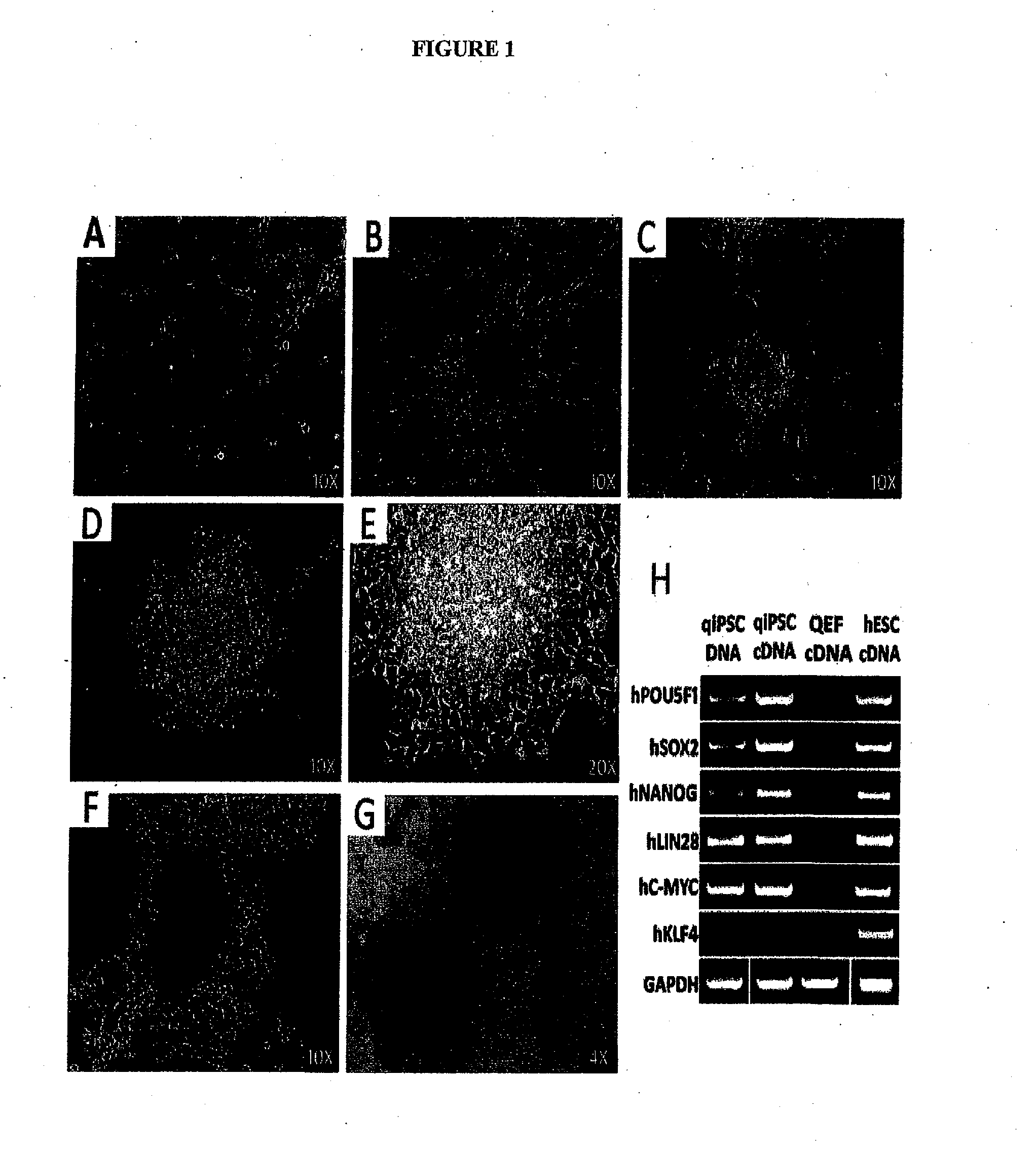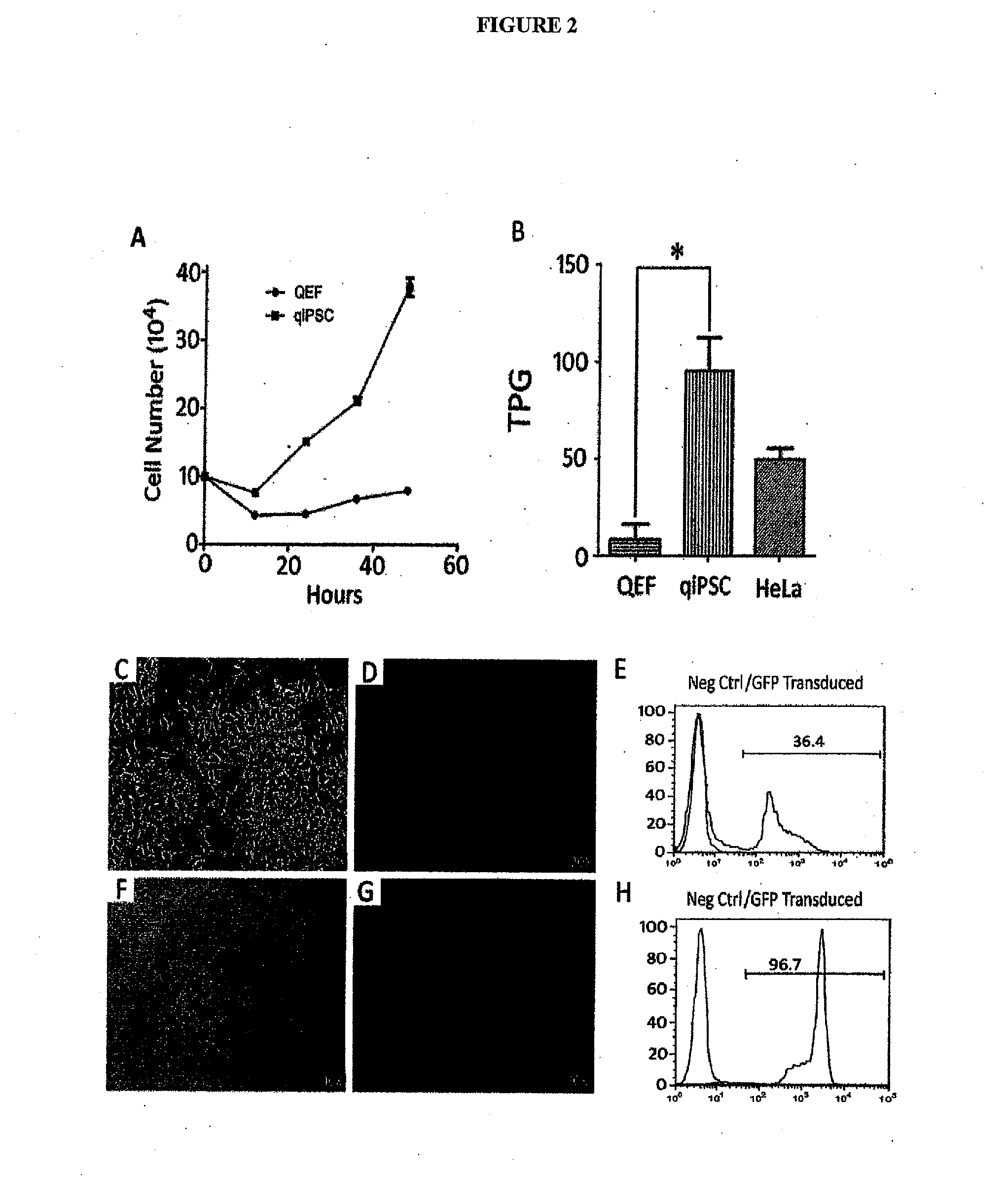Avian Induced Pluripotent Stem Cells and Their Use
a technology of stem cells and avian genus, which is applied in the direction of genetically modified cells, skeletal/connective tissue cells, viruses/bacteriophages, etc., can solve the problems of inability to generate non-mammal ipscs, other challenges and difficulties, and not being able to meet the needs of mammalian species, and achieves a robust clonal rate.
- Summary
- Abstract
- Description
- Claims
- Application Information
AI Technical Summary
Benefits of technology
Problems solved by technology
Method used
Image
Examples
examples /
Examples / Results
Quail Pluripotent Stem Cells
[0282]qiPSCs Display Morphological Characteristics Consistent with a Pluripotent Cell Type
[0283]The generation of qiPSCs was initiated by testing the lentiviral transduction efficiency of isolated (QEF) (FIG. 1A) with an eGFP reporter construct using both GeneJammer and TransDux transduction reagents. A 20 MOI transduction with Transdux resulted in the highest efficiency with 40.5% (GFP) positive cells (S. FIG. 1). QEFs were then transduced with the six human pluripotency genes hPOU5F1 , hNANOG, hSOX2, hLJN28, hC-MYC and hKLF4 driven by the elongation factor 1-alpha (EF1-a) promoter with each construct in individual lentiviral vectors. After 24hrs, cells were replated on feeder cells in stem cell expansion medium.
[0284]Colonies were observed beginning 6 days after transduction with irregular shaped borders and fibroblast-like cell morphology (FIG. 1B). These initial colonies failed to proliferate and expand indicating that these colonies w...
example
[0340]Chicken Induced Pluripotent Stem Cells using a Non Integrating System.
[0341]The benefits of non integrating systems are the following: The molecular basis of reprogramming has been revealed by exogenous expression of combinations of transcription factors described in prior examples for quail and chicken, described above. Induction of reprogramming was carried by these factors is mostly carried out by co-infection with retroviral or lentiviral vectors. The main problems of the retrovirus-based method are oncogenicity and mutagenesis. Chimeric mice derived from iPSCs as well as their offspring developed tumors, probably because of reactivation of the proviral cMyc oncogene. Even though three-factor (Oct4, Sox2, and Klf4) iPSC-derived animals did not develop tumors, ectopic expression of any one of these genes may have deleterious consequences. For instance, ectopic expression of Oct4 in skin and intestine causes tumor development. Overexpression of Klf4 induces dysplasia in skin...
PUM
| Property | Measurement | Unit |
|---|---|---|
| concentrations | aaaaa | aaaaa |
| doubling time | aaaaa | aaaaa |
| doubling time | aaaaa | aaaaa |
Abstract
Description
Claims
Application Information
 Login to View More
Login to View More - R&D
- Intellectual Property
- Life Sciences
- Materials
- Tech Scout
- Unparalleled Data Quality
- Higher Quality Content
- 60% Fewer Hallucinations
Browse by: Latest US Patents, China's latest patents, Technical Efficacy Thesaurus, Application Domain, Technology Topic, Popular Technical Reports.
© 2025 PatSnap. All rights reserved.Legal|Privacy policy|Modern Slavery Act Transparency Statement|Sitemap|About US| Contact US: help@patsnap.com



